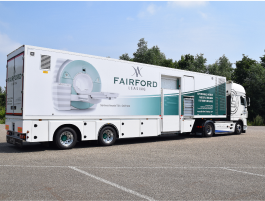As advances in artificial intelligence, automation and IoT begin to materialise and find their way in to modern medical practice, the question as to whether technology can replace humans in the provision of healthcare is raised once more. For existing radiologists, fear of the future and the technological developments it holds is not uncommon. The same can be said of radiology students, many of whom are apprehensive about advancements in intelligent systems and their potential to do away with the need for human intervention altogether.
Yet, while the technology may be new, the dilemma certainly is not. For every time technological advances transform a sector, we are reminded of our own importance within that field. This is more relevant than ever in the world of radiology – a medical discipline that has evolved over the years as medical imaging technology has progressed.
Indeed, Artificial Intelligence (AI, or to be more precise, Deep Learning) will NOT make radiologists redundant, but will allow them to be more effective, efficient and accurate when reporting on scans. Rather than replacing human skills, AI will become the radiologist’s assistant in speedily reporting a diagnosis.
The AI pre-report can also triage the patient’s need for priority if it finds imminent life-threatening conditions, such as injuries sustained from a road accident.
As ground-breaking as medical imaging technology may be, it is the unique skill-set of radiologists we have to thank for the lives that have been saved through this technique.
OPERATING AND MAINTAINING EQUIPMENT
Unless you work in radiology, you may not appreciate the work that goes on behind the scenes of medical imaging, nor the expertise that a radiologist must possess in order to maintain and operate the equipment.
Whether it’s an X-ray, an Ultrasound, an MRI or a CT scanner, radiologists must undergo rigorous training before they can confidently manage the process of creating images inside the human body (as you can probably imagine, it’s not a technique in which transferrable skills and a knack for technology will suffice). It takes specialist knowledge to perform image-guided procedures, and it’s not uncommon for radiologists to employ technicians to assist with the imaging process to ensure accuracy and efficiency at every step.
Beyond operating the machines, medical imaging teams must be able to identify functionality issues, handle the repairs and general upkeep of the scanners. Their expertise in this complex field comes back into play whenever wider decisions regarding the acquisition of new or refurbished machines are made by the practice.
INTERPRETING MEDICAL IMAGES
Key to attaining strong patient outcomes is getting the correct diagnosis in a timely manner. This puts the pressure on clinical imaging services in terms of the volume of imaging examinations carried out, the increasing complexity of imaging interpretations and the speed with which these need to be delivered.
A workstation comprising of multiple high-resolution monitors displays imaging studies that a radiologist will use as a comparative tool to draw accurate conclusions from patient scans. As well as this, the medical imaging professional must incorporate the patient’s history and current symptoms into their interpretation before communicating findings back to the physician.
When AI is plugged into the reporting software (such as Nuance’s Powerscribe 360) it will shoot the scan into the cloud for an AI report in a matter of minutes. Companies like Zebra Medical charge just $1 a report and return the data by filling out the initial report. It is the role of the radiologist to then consider the report and the patient’s history and then analyse the Scan. This will speed up the time taken to issue the report without compromising the accuracy or appropriateness of the conclusion.
ADDING VALUE TO HEALTHCARE PRACTICES
Having performed an image-guided procedure and drawn results from interpretation, radiologists must then communicate their findings to the physician caring for the patient to allow for the best treatment decisions to be taken at an early stage. It may sound relatively straightforward, but the multitude of distractions and disruptions during the average working day makes the life of a radiologist hectic to say the least.
According to research from the University of British Columbia and the Fraser Health Authority, diagnostic radiologists spent only 36.4 percent of their time on image interpretation, with the rest of their time dedicated to non-interpretive tasks, such as protocol requisitions, supervising and monitoring studies, performing image-guided procedures and consulting with physicians. What’s more, the researchers noted that total clinical productivity was 87.7 percent and the radiologists experienced, on average, six interactions per hour with other health personnel. Interruptions were sometimes as frequent as 12 times per hour.
Without the team behind the machine, healthcare practices might as well save themselves the cost of medical imaging technology. After all, radiologists train for years in order to ensure competence and continuity across all imaging modalities and clinical scenarios; the accurate interpretation of images requires specialist knowledge if it is to prompt appropriate care for the patient.











